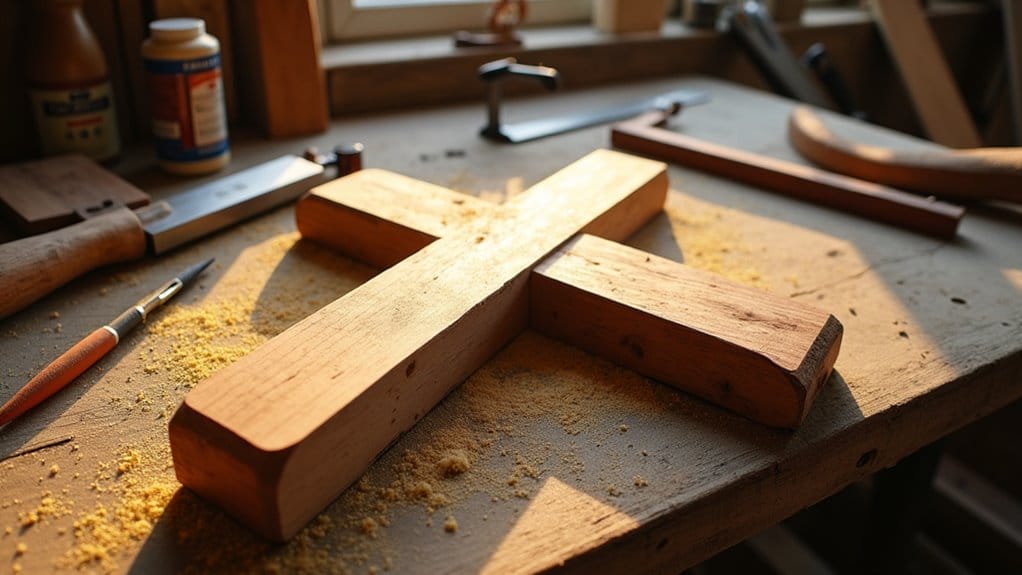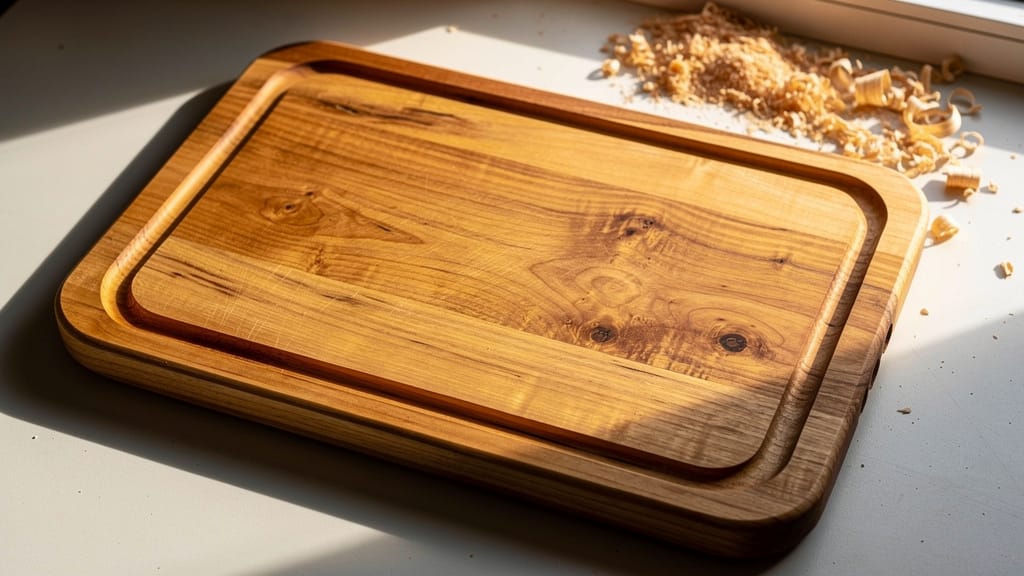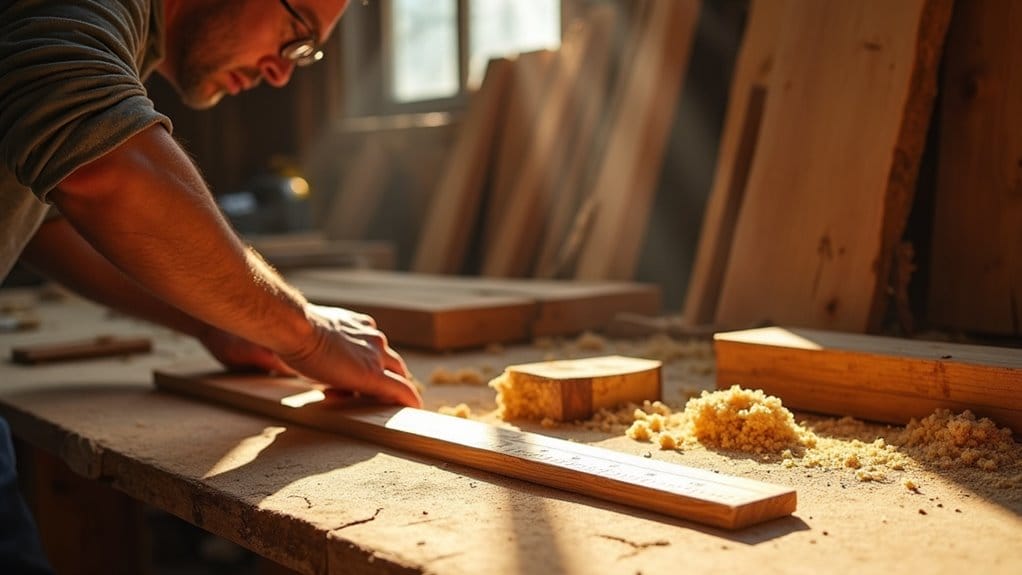Wood has long been essential in Japanese kitchens for practical, sensory, and cultural reasons. This article explains which woods are used, why they are chosen, how to care for wooden kitchenware safely at home, and how cultural and sustainability issues shape use and sourcing.
Why Wood Matters in Japanese Cooking

Wood is chosen for functional reasons beyond appearance:
- Knife preservation: softer woods cushion blades and slow dulling.
- Moisture management: wood buffers humidity and redistributes moisture (important for sushi rice, pickles).
- Micro-oxygenation: wooden barrels permit tiny, continuous gas exchange that influences long fermentations (miso, soy sauce), promoting slower flavor development.
- Aroma and extractives: Hinoki and cedar contain volatile compounds that can subtly perfume foods.
- Aesthetics and ritual: wood supports seasonal, ritualized presentation and the wabi-sabi aesthetic.
Common Woods and Typical Uses
- Hinoki (Japanese cypress) — hangiri/sushi oke, cutting boards, steam-contact items. Properties: light, fine grain, pleasant citrus-like aroma, rot resistance.
- Kiri (Paulownia) — bento boxes, storage chests. Properties: extremely light, low thermal conductivity, stable (resists warping).
- Sugi (Japanese cedar) — magewappa bento, trays. Properties: aromatic, flexible for steam-bending.
- Oak, chestnut, other hardwoods — heavy-duty cutting boards, some barrels. Properties: higher hardness and abrasion resistance; different oxygen transfer profiles for barrels.
Table — Common Woods: Uses and Properties
|
Wood (common name) |
Typical Uses |
Key Properties |
Practical Notes |
|---|---|---|---|
| Hinoki (Japanese cypress) | Hangiri / sushi oke, cutting boards, steam-contact items | Light, fine grain, natural rot resistance, citrus-like aroma | Excellent for rice-related tools; moderate moisture absorption; preferred where mild aroma and heat resistance matter |
| Kiri (Paulownia) | Bento boxes, storage chests, gift boxes | Extremely light, low thermal conductivity, dimensionally stable | Good for portable lunch boxes and long-term storage; not for heavy chopping |
| Sugi (Japanese cedar) | Magewappa bentō, serving trays, steam-bent items | Distinctive aroma, flexible when steamed, attractive grain | Aroma aids presentation; suitable for breathable containers that help prevent sogginess |
| Oak / Chestnut / Other hardwoods | Heavy-duty cutting boards, some fermentation barrels, utensils | Higher density and hardness, greater abrasion resistance | Better for heavy chopping; barrels impart different oxygenation and flavor characteristics depending on wood and toasting |
| (Notes) | Choose woods free of toxic treatments/finishes; prefer food-grade, untreated surfaces and certified or reputable sources |
How Wood Affects Taste and Texture

Wood changes food subtly in three main ways:
- Moisture buffering
Wood absorbs and releases moisture. When hot rice is spread into a wooden hangiri, the wood takes up surface moisture and speeds cooling. That makes the grains glossier, less soggy, and easier to separate. - Micro-oxygenation
Wood and small gaps in wooden vessels allow tiny amounts of air into fermenting mixes. This slow, steady oxygen supply alters fermentation chemistry, encouraging slower, more complex flavor development (deeper umami and nuanced aromatics) compared with airtight containers. - Aromatic extractives
Some woods (hinoki, sugi) contain volatile compounds like terpenes that can transfer trace aromas to food. The effect is delicate — a faint complementary scent that can enhance perceived freshness without overpowering the dish.
These three effects interact with handling, temperature, and time. The tactile and thermal properties of wood (how it feels and retains or insulates heat) also change how food is mixed, cut, and served, which indirectly affects texture and mouthfeel.
Hygiene and Household Safety

General Principles
- Wood is not sterile. Some woods contain antimicrobial extractives, but wood must still be cleaned, dried, and maintained.
- Avoid cross-contamination. Use separate boards for raw proteins and ready-to-eat foods, or follow strict cleaning/sanitizing between uses.
Daily Cleaning (Step-by-step)
- Rinse immediately with warm water (45–60 °C) to remove residues.
- Wash with a soft brush or cloth and mild neutral dish soap; scrub gently along the grain.
- Rinse thoroughly.
- Wipe off excess water and dry immediately; stand upright or hang in a well-ventilated area.
- Do not put wooden items in the dishwasher or soak for long periods.
Routine Sanitizing (Occasional)
- Use a diluted sodium hypochlorite solution (household bleach diluted to 50–200 ppm free chlorine) for occasional sanitizing. Apply for 1–2 minutes, rinse thoroughly, then dry. Typical dilution: about 1:100 to 1:500 of 5–6% household bleach (calculate based on product concentration).
- Alternatively, wipe with 70% isopropyl alcohol and let it evaporate, then dry.
- Avoid frequent use of strong oxidizers that degrade wood fibers.
Stain, Odor, and Mold Handling
- Stains/embedded residue: Make a paste of baking soda and water, rub gently with the grain, then rinse and dry.
- Light surface mold: Sand lightly with fine-grit sandpaper, wipe with 70% ethanol or a 200 ppm chlorine solution, then dry thoroughly.
- Persistent/deep mold: Retire from food use and repurpose for non-food functions; deep mold can penetrate porous wood beyond safe removal.
Conditioning and Oils
- Use food-grade mineral oil or camellia (tea seed) oil to condition boards and utensils. Apply sparingly, let soak, wipe excess, and buff. Reapply monthly with regular use; frequency depends on climate and use intensity.
- Do not use vegetable cooking oils (olive, sunflower) — they can oxidize and become rancid.
When to Replace
Replace items with deep grooves (≥1–2 mm) that cannot be sanded smooth, persistent mold after treatment, severe warping, or structural cracks.
Fermentation Safety at Home
- Use dedicated wooden containers for fermentation; never alternate with raw protein handling.
- If you cannot ensure temperature/humidity control and strict cleaning, prefer glass or stainless steel for fermentation to reduce microbial risk.
Cultural History and Regional Craft Practices
Historical context
Wooden vessels have been integral to Japanese food culture (rice preparation, miso/soy sauce fermentation, bento presentation). Many forms developed through centuries of pragmatic refinement and ritual use.
Regional crafts and techniques
- Magewappa (steam-bent bento) is linked to Tōhoku/ Akita craft traditions; craftsmen select thin-sawn cedar/cypress, steam-bend, and join without nails to create breathable lunch boxes.
- Hinoki production historically centers in regions like Kii and Yoshino; its use spans baths, shrines, and kitchen implements for scent and rot resistance.
- Cooperage for fermentation barrels includes local variations in stave shaping, hooping, and slight toasting — each choice influences porosity and aroma transfer.
Ritual and seasonal use
Utensil selection often follows seasonal sensibilities (lighter woods perceived as “cool” in summer). Wooden tableware and utensils are commonly given as meaningful gifts and may serve as heirlooms.
Sustainability and Responsible Sourcing
- Prefer certified wood: Look for FSC or PEFC certification to ensure responsible forest management.
- Support local artisans: Buying from regional craft shops often means thinner supply chains, higher-quality wood selection, and artisan techniques that favor longevity.
- Repair and reuse: Sanding, re-hooping, re-oiling, or repurposing extends lifespan and reduces waste.
- Substitution outside Japan: If hinoki or sugi are unavailable locally, choose local softwoods with similar grain, aroma, and stability—but verify food safety (no toxic treatments or finishes).
- Lifecycle awareness: Wood typically has lower embodied energy than plastic, but its environmental advantage depends on durability and end-of-life disposal; favor repair and composting where feasible.
Practical Selection and Use Checklist

- For sushi rice and rice tubs: Hinoki hangiri — choose tight grain, no decay, moderate thickness.
- For portable boxes: Kiri for lightness and thermal insulation.
- For flexible, aromatic bentō: Sugi (cedar) magewappa.
- For heavy chopping boards: Hardwoods (oak, chestnut) if you can maintain knife edges elsewhere.
- For fermentation barrels: buy from reputable cooperages; inspect for leaks, smell, and clean craftsmanship.
Conclusion
Wooden kitchenware in Japanese cuisine blends function, subtle sensory influence, and cultural meaning. When chosen and maintained properly, wood offers knife-friendly surfaces, moisture regulation, mild aromatic contributions, and ceremonial value. To use wood safely and sustainably at home, follow the cleaning and sanitizing steps, condition with stable food-grade oils, retire deeply damaged or mold-penetrated items, and prefer certified or locally managed sources when purchasing.






































